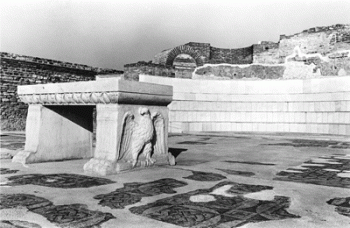American Journal of Archaeology | The Journal of the Archaeological Institute of America
You are here
False Fronts: Separating the Aedicular Facade from the Imperial Cult in Roman Asia Minor
July 2006 (110.3)
False Fronts: Separating the Aedicular Facade from the Imperial Cult in Roman Asia Minor
When found in the central rooms of gymnasia of Roman Asia Minor, the multiple-column, multistory aedicular facade of the “marble style” has been thought to symbolize “the imperial cult.” Yet that design is never used for actual provincial temples dedicated to the worship of emperors. This article shows how the theory that aedicular facades set the scene for worshipping emperors lacks any foundation; the inscriptions, sculpture, and furnishings of the so-called Kaisersäle honor the patron deities and benefactors of the cities in question as much as the emperors, and have been taken to signify cult when they in fact do not. The meaning behind this ostentatious decor is then pursued beyond gymnasia, to theaters, bouleuteria, temples, gates, libraries, nymphaea, and even tombs. It was a sign of the theater, of Roman elite status, and even a form of conspicuous consumption; but many gods, personifications, and civic donors, not just the emperors, were associated with it.
False Fronts: Separating the Aedicular Facade from the Imperial Cult in Roman Asia Minor
By Barbara Burrell
American Journal of Archaeology Vol. 110, No. 3 (July 2006), pp. 437–469
DOI: 10.3764/aja.110.3.437
© 2006 Archaeological Institute of America


